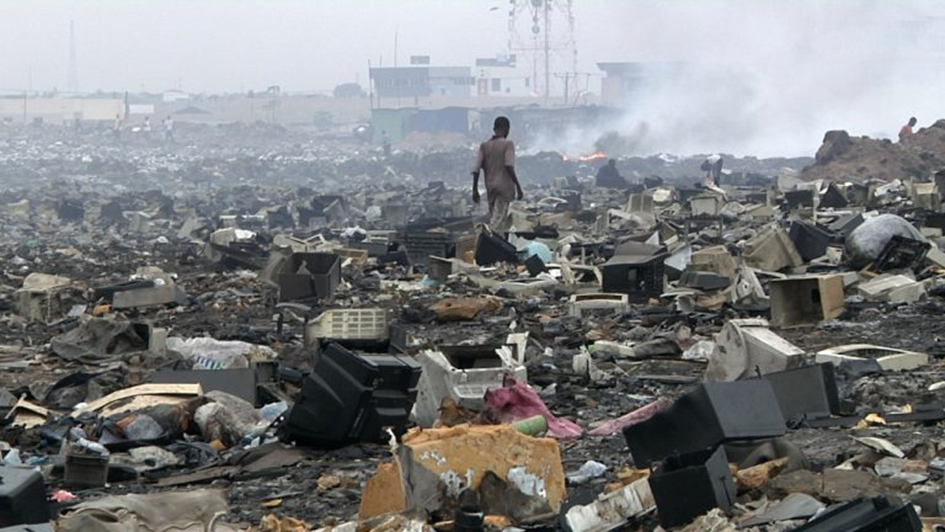E-Waste: The Digital Dilemma We Can't Ignore
by Marisa Frank, on Oct 10, 2023In our fast-paced digital world, we are wired to upgrade devices such as smartphones and laptops at a rapid pace. Have you ever wondered what happens to electronic products after they're used? Unfortunately, a large portion of electronic products are not recycled, but become a massive problem known as electronical waste or e-waste. E-waste is the world's fastest growing domestic waste stream with over 10 million tons per year in Europe alone. While Europe has the world's highest recycling rates at circa 40%, Europeans are also the largest e-waste producers per capita. Let's not ignore this massive problem. Let's do something together. To start, we will look at this growing problem to better understand it and figure out jointly how we can make a difference.

What Is E-Waste?
E-waste definition:
Simply put, e-waste is electronic waste. For the everyday person, this is generally depicted in our day-to-day and household tech usage. Examples of e-waste include, but are not limited to: phones, laptops, tablets, televisions, fridges, microwaves, etc.
The Growing Mountain of Electronic Waste
Why is e-waste growing?
The alarming increase in e-waste is due to several factors:
- Shorter usage periods: Electronic products are used for shorter periods of time than they were a few decades ago. The average lifespan of smartphones, televisions and vacuum cleaners is 2.3 years shorter than their intended lifespan.
- Rapid technological advancement: The rapid development of technology encourages consumers to replace their devices with newer, more advanced models, leading to a rapid increase in e-waste.
- Global consumerism: The growing middle class and affordability of electronic devices are contributing to higher consumption and disposal rates.
- Planned obsolescence: Manufacturers often design products with limited lifespans, leading consumers to upgrade and prematurely dispose of their electronic devices.
E-waste uncovered
Why is e-waste a problem?
E-waste presents significant environmental, social, and health challenges:
- E-waste dumps as hotspots for environmental pollution and social issues: E-Waste dumps in the Global South pose significant environmental and social challenges, with hazardous materials and poor working conditions affecting local communities leading to long-term health issues and environmental contamination. The illegal export of electronic devices from regions of the Global North, coupled with a lack of regulatory oversight, exacerbates the issue.
- Toxic materials: Electronics contain hazardous substances like lead, mercury, and cadmium, which can leak into the environment when improperly disposed of, posing serious health and environmental risks.
- Resource depletion: When we discard electronics, we waste valuable materials like gold, silver, and rare earth metals that are lost when electronics are discarded, intensifying resource scarcity issues.
- Environmental & social impacts of resource extraction: The quest for resources for electronic devices takes a toll on our environment, resulting amongst other issues in water pollution, habitat destruction, and deforestation. Simultaneously, it generates social challenges such as hazardous working conditions and human rights violations, especially in mining and manufacturing sectors.
The e-waste problem is more than meets the eye, affecting our world in diverse and interconnected ways. Understanding these facets is crucial to addressing the issue comprehensively.
Let’s be the change
How can we shrink e-waste?
Now that we've grasped the seriousness of the e-waste issue, let's join forces to combat it. Here are various approaches to take action:
- Prolong the life-span:
- Embrace current tech: Did you know that the latest tech upgrades are often minor? You can stick with what you have.
- Repair, don't replace: Got a cracked screen or a fading battery? You don't necessarily need to toss your device; consider getting it repaired.
- Dispose responsibly:
- Give your gadgets a second chance: Even better than disposal, give your old smartphone a new life by selling it. You'll not only reduce e-waste but also earn money. Don’t want to sell? Then donate your device to a friend or family member; or you can even donate it to a worthy charity.
- Locate recycling centres: Find local e-waste recycling canters where your old gadgets can be safely processed.
- Rethink "new" - the advantages of refurbished electronics:
- Opt for refurbished over brand new: If you're in the market for a new device, consider going the refurbished route to significantly minimise your environmental footprint. Did you know that purchasing refurbished smartphones, tablets, and laptops at refurbed can save between 60% and 93% of e-waste? How do we know this so precisely? We commissioned the Fraunhofer Austria Institute to quantify the savings of 5 of our bestsellers through a scientific study. Learn more about the impressive results here. Help us to make refurbished devices the new normal, so we can jointly combat the rising e-waste numbers.
Sources:
https://ewastemonitor.info/gem-2020/
https://www.eea.europa.eu/highlights/longer-lasting-electronics-benefit-environment
